Ever wondered how artists make their drawings feel so lifelike, with depth and dimension that pull you in? It’s all thanks to a simple technique called perspective. This blog post is your guide to unraveling the concept of perspective, focusing on one particular type: one-point perspective.
Perspective is what adds depth, scale, and that third dimension to your artwork, mimicking how we perceive the real world. In this blog, we’ll break down what it is, how it functions, and most importantly, how you can incorporate it into your art.
Whether you’re new to art or looking to expand your skill set, this blog post is here for you. We’ll cover the basics, walk you through the steps, and help you integrate perspective into your artistic toolkit.
So, if you’re ready to unveil the principles that govern how we see the world in all its three-dimensional glory, let’s delve into the world of one-point perspective and explore the mechanics behind the way our eyes perceive reality.
Important Art Terms in Perspective Drawings
Understanding some terms in art can be a bit confusing. let’s take a quick look at some fundamental terms that lay the groundwork:
Horizon Line
Think of the horizon line as the line that marks where the sky meets the ground. In your art, it’s like the starting point that helps you create the illusion of distance and depth.
Vanishing Point
The vanishing point is where parallel lines seem to meet on the horizon, adding depth to art. Think of a road—the farther it goes, the closer its sides appear. This happens because objects seem to get smaller as they move away from us.
In perspective drawings, vanishing points are vital. They are where lines on your paper come together, making your art look three-dimensional. One point perspective has one vanishing point, two-point or three-point perspectives, use two or three vanishing points respectively, each contributing to the art of illusion.
Converging Lines
What is One-Point Perspective?
One-point perspective is a type of linear perspective—an artistic approach that mirrors the way our eyes grasp depth in the world around us. Linear perspectives take various forms, such as one, two, three, four and mixed-point perspectives. These techniques are like visual tools designed to recreate the world’s three-dimensional appearance on a flat canvas.
One-point perspective stands as a fundamental technique. As the name suggests, it revolves around a single point of convergence—the vanishing point—where all the elements within an artwork seemingly converge. Objects within the composition appear to shrink as they move away from us, all converging towards this solitary point. This creates the illusion of depth and the perception of a three-dimensional space, just like how our eyes interpret depth in real life.
One-point perspective is particularly effective when capturing scenes from a direct viewpoint—when you’re looking straight at the subject. Think of train tracks that stretch into the distance, seemingly merging at one point on the horizon. Imagine gazing into a room, where the walls seem to come together towards that same point. It’s this technique’s ability to mimic how objects become smaller as they recede that gives artwork its lifelike depth.
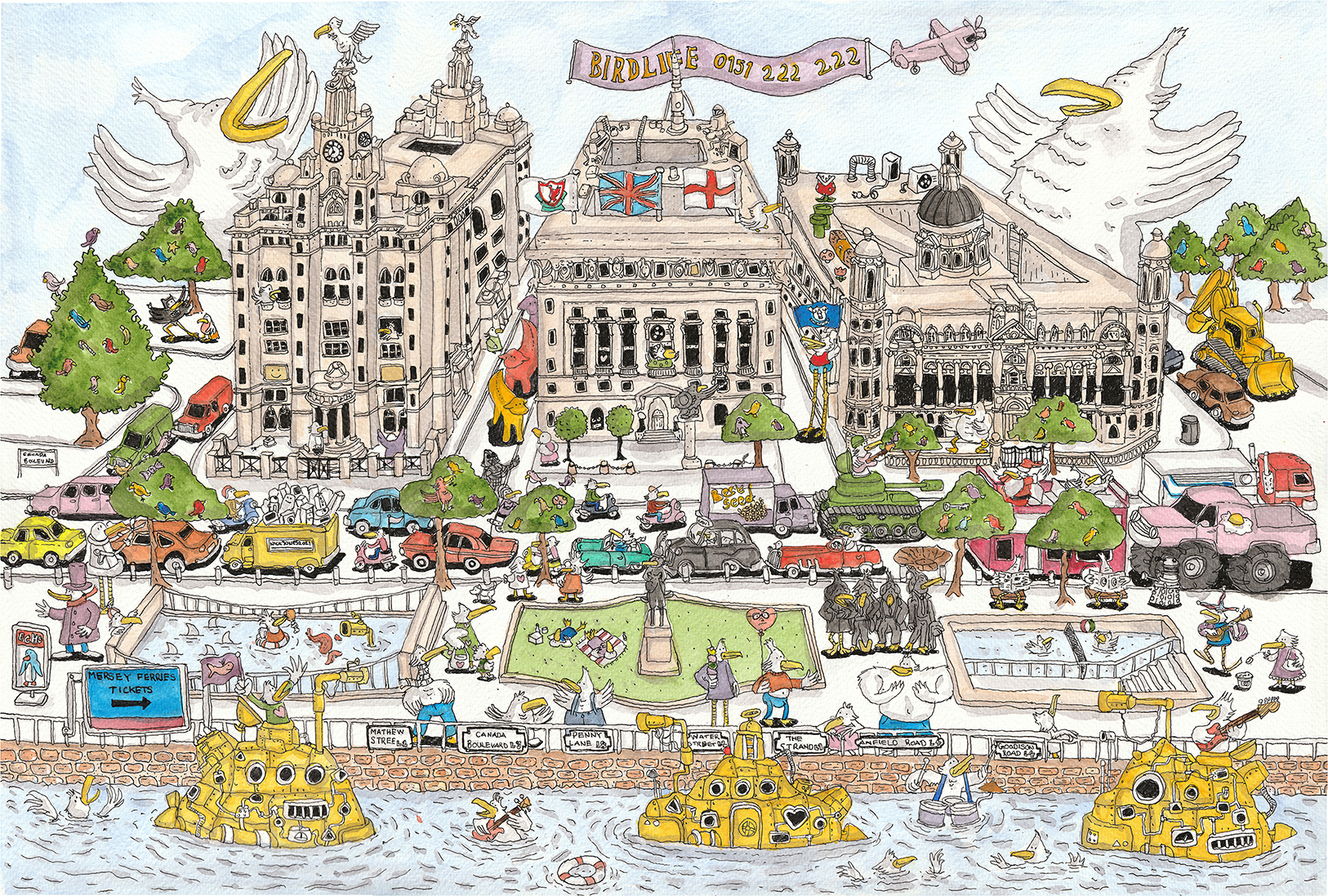
In this illustration, we see an example of a drawing created using one-point perspective.
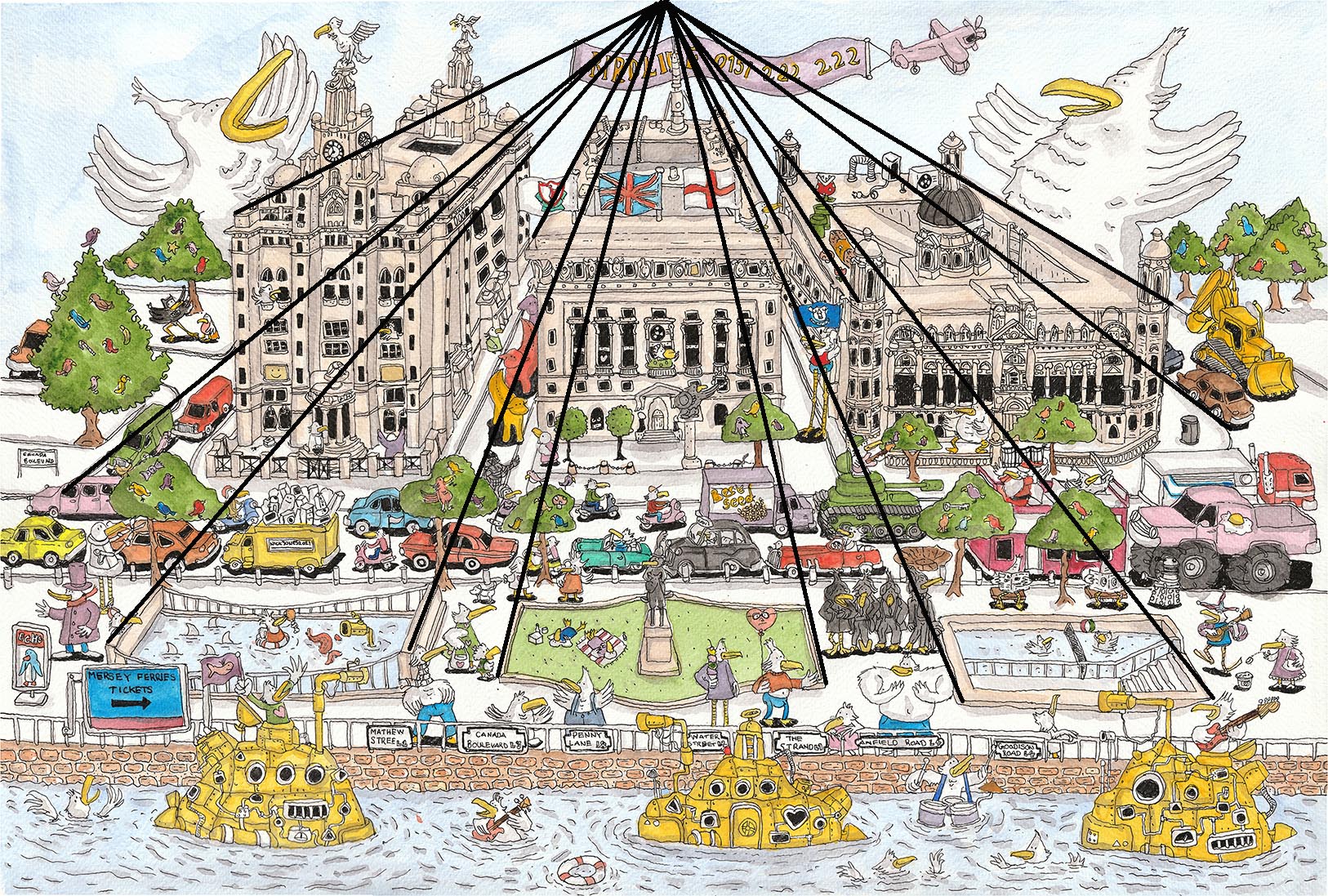
In this modified version of the previous illustration, lines have been added to demonstrate how all the diagonal lines in the composition converge towards the vanishing point at the top of the picture. This convergence defines both the vanishing point and the horizon. In this case, the horizon is positioned at the top of the picture.
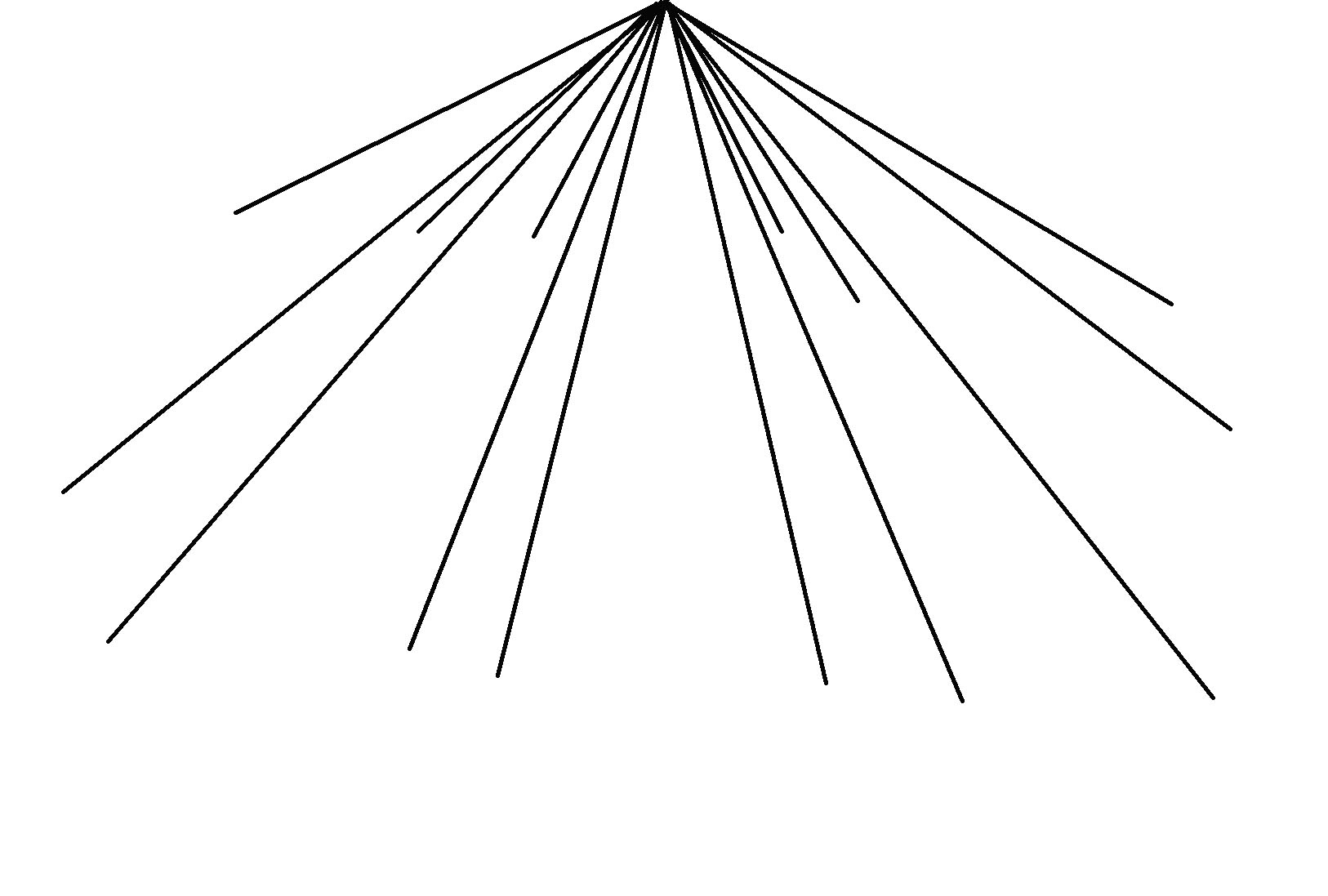
With the original picture removed, only the converging lines remain. It’s now clear how these lines work together, all leading to a single vanishing point on the horizon. This technique, seen in one-point perspective, recreates the natural way our eyes perceive depth.
How to Draw Using One-Point Perspective
In this section, we’re going to have a look at a practical example of using one-point perspective. We’ll start with something simple: drawing boxes. But don’t let the simplicity fool you—these techniques are the same that are used to create all sorts of one-point perspective drawings. Whether you’re sketching a city scene, a room, or any other subject, these steps will help you bring depth and realism to your art.
Step 1: Horizon Line
To set the stage for your one-point perspective drawing, draw a straight line across the middle of the paper. This line is your horizon line. It’s like the boundary between the ground and the sky in your artwork. Think of it as your starting point—a reference for placing objects and creating depth in your drawing.
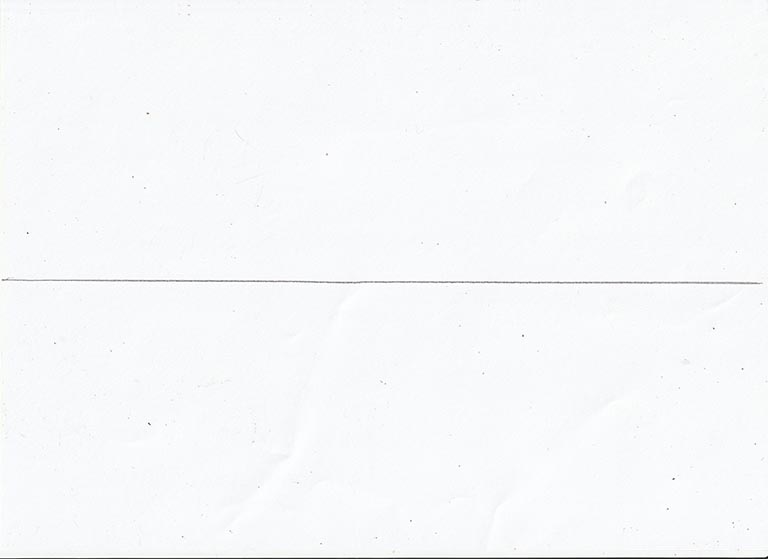
Step 2: Creating the Vanishing Point
With your horizon line in place, now it’s time to introduce the vanishing point. Draw a small dot at the center of the horizon line. This dot is your vanishing point—the anchor that guides the converging lines in your drawing. Think of it as the point where all the parallel lines will meet, giving your artwork its three-dimensional look.
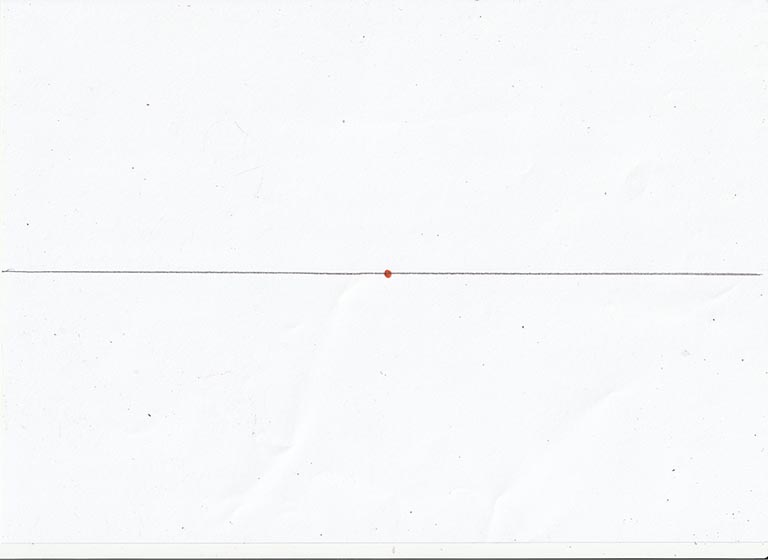
Step 3: Drawing Boxes
Draw a square on the horizon line, positioned to the side of the vanishing point. This square represents the front face of your box. The sides of the square that are parallel to the horizon line will be the top and bottom edges of your box.
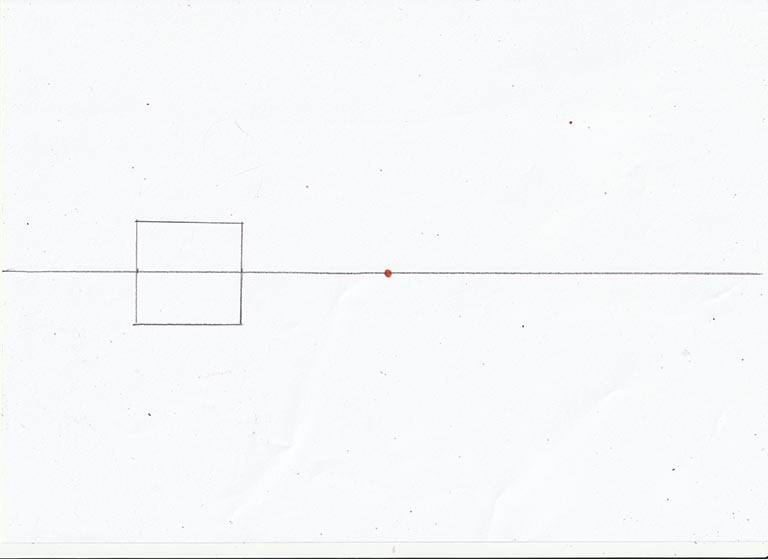
Step 4: Using Converging Lines to Create Depth
Let’s add depth by using converging lines to transform the square into a three-dimensional box. Draw straight lines from each corner of the square towards the vanishing point. These lines create the illusion of distance, as if the box is moving away from you.
Now, draw a vertical line connecting the converging lines. This line completes the box’s structure, giving it volume and a sense of solidity. The combination of these lines is what brings your box to life, making it appear to exist in a three-dimensional space.
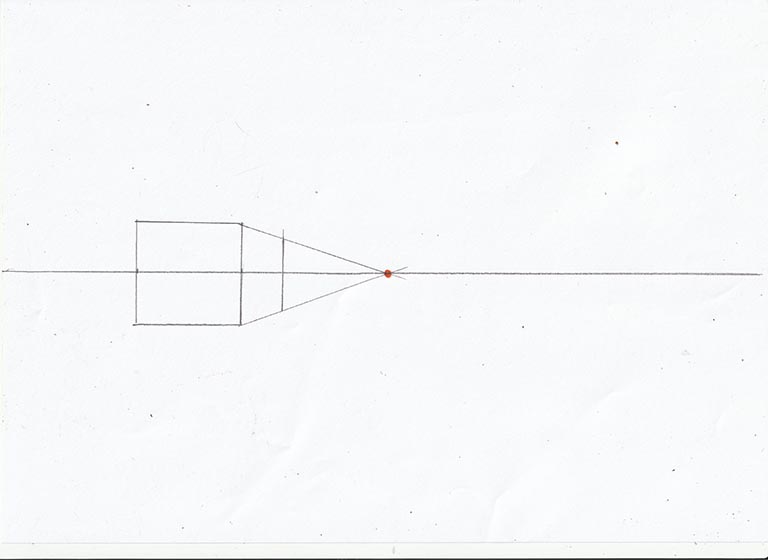
Step 5: Above or Below the Horizon
Now let’s look at how the placement of the box can change its perspective. By positioning the box above or below the horizon line, you can create the illusion of looking up or down at the subject.
If you draw the box above the horizon, it appears as though you’re looking up at it. The converging lines will extend downward from the corners of the square, giving the box the impression of receding into the distance above you.
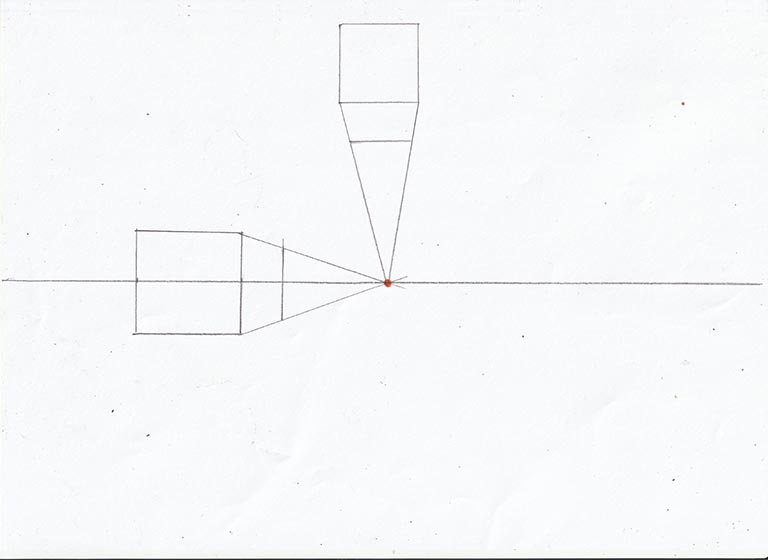
Conversely, if the box is placed below the horizon, it gives the impression of looking down at it. The converging lines will extend upward from the corners of the square, creating the illusion that the box is moving away from you, towards the ground.
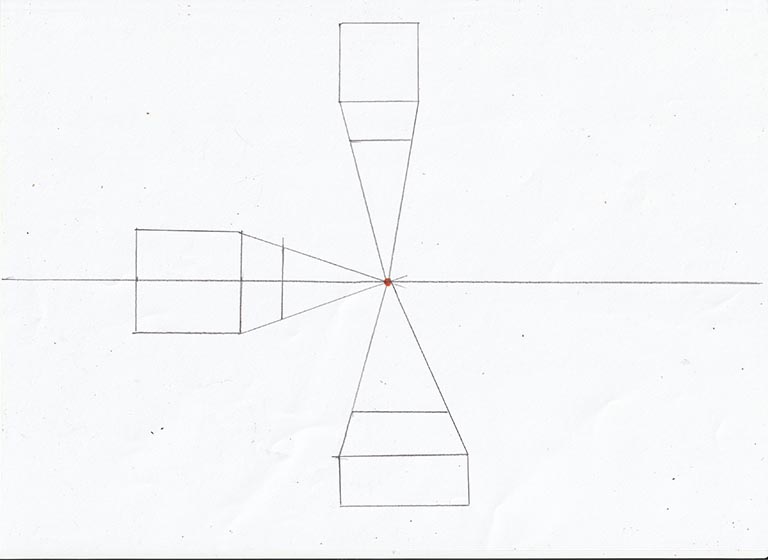
Step 6: Exploring Different Planes
Let’s continue by drawing another box, this time above and to the left of the horizon line. This illustration will reveal three distinct planes of the box, demonstrating how altering its position can create varying perspectives.
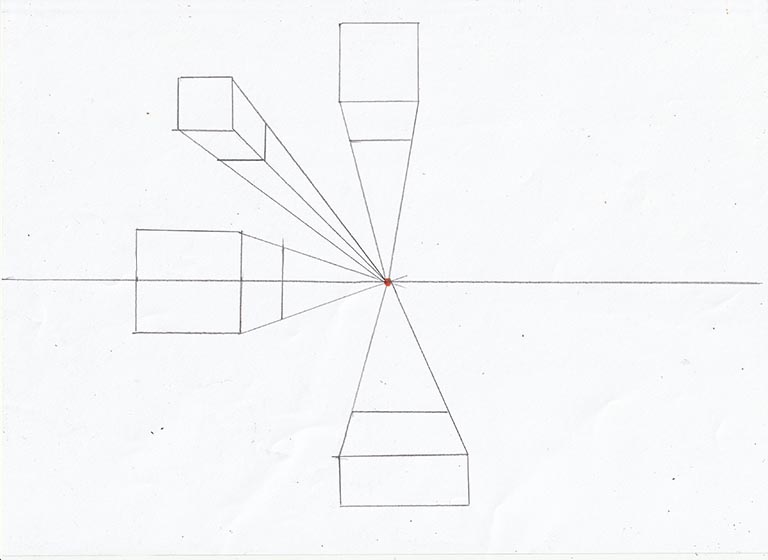
Remember that you can replicate this process for the remaining positions:
- Above and to the Right of the Horizon
- Below and to the Left of the Horizon
- Below and to the Right of the Horizon
Each instance unveils a unique viewpoint, showcasing how versatile one-point perspective can be in shaping your artwork.
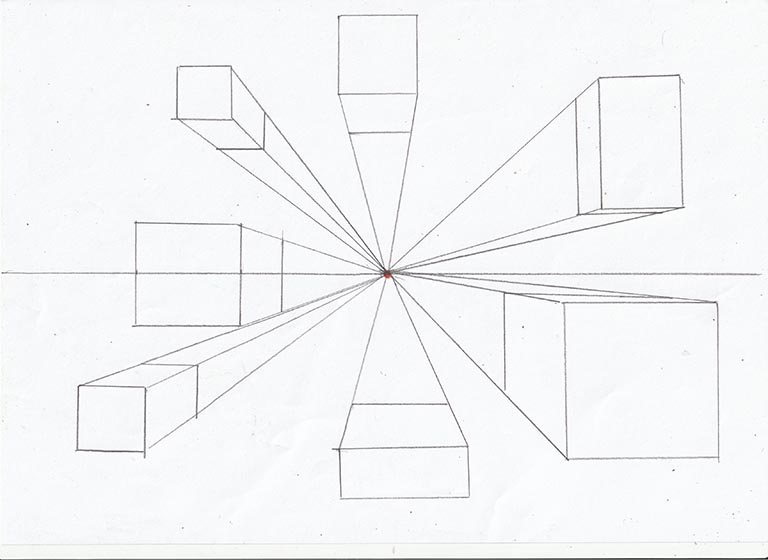
Once we have finished our drawing, we can remove the converging lines to reveal the finished piece. We now have a series of two dimensional boxes all in one point perspective creating the illusion of a three dimensional space.
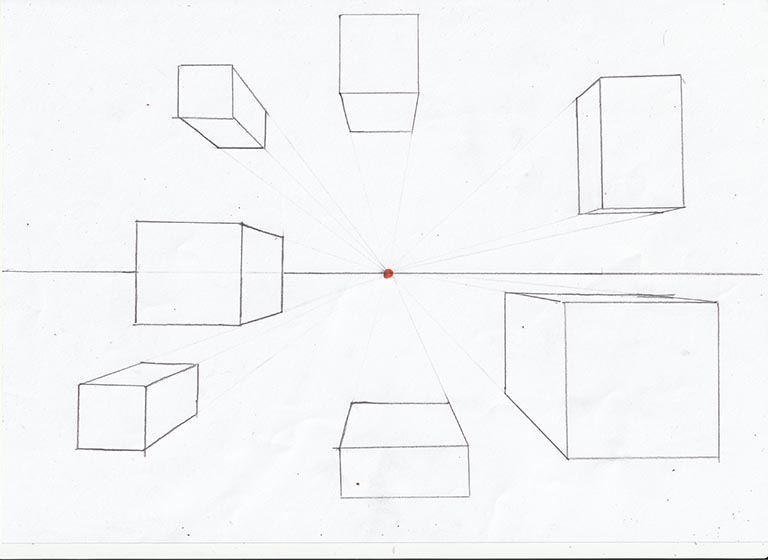
Examples of One-Point Perspective in Art
In this section, we’ll take a closer look at how artists have effectively used one-point perspective in their artworks. By observing these examples, you’ll gain valuable insights into how this technique can transform a composition.
Leonardo da Vinci - The Last Supper
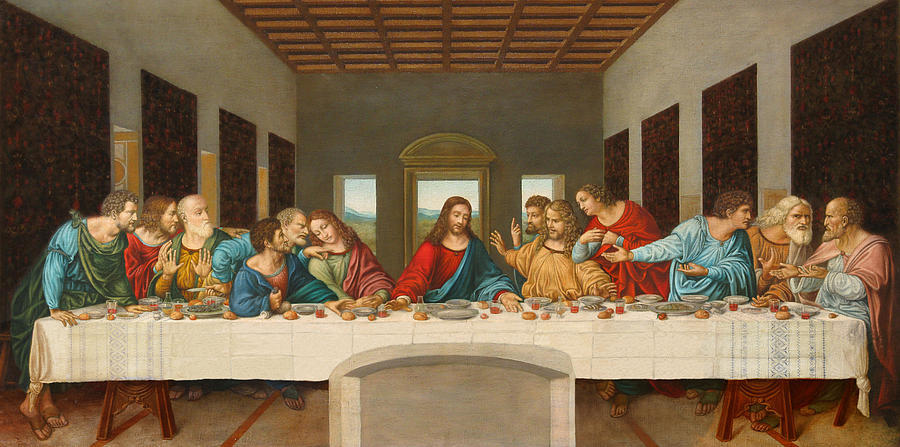
Da Vinci’s iconic masterpiece showcases a remarkable application of one-point perspective. The lines of the room converge towards a single vanishing point, drawing viewers’ gaze towards the heart of the scene. As the disciples gather around the table, the use of one-point perspective creates a sense of depth that immerses us in the moment. This deliberate arrangement not only guides our focus but also accentuates the emotional intensity of the interaction.
Pietro Perugino - Delivery of the Keys to Saint Peter
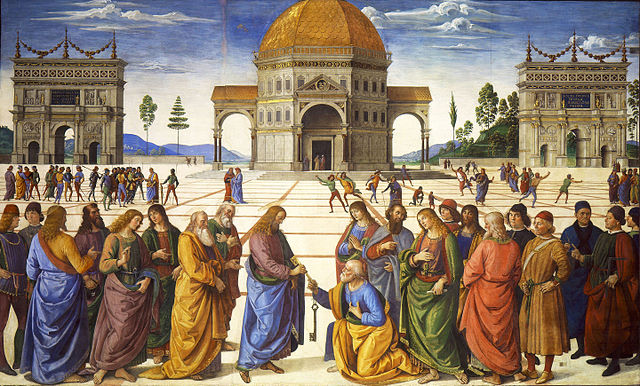
Perugino’s painting shows us how one-point perspective can make a scene feel more real. He cleverly used lines that seem to meet at one spot, making our eyes focus on the center of the painting. Look at how Jesus is handing the keys to Saint Peter – those lines draw us right to that moment. This trick not only makes the story clearer but also makes the whole painting seem deeper, like we’re right there in the picture.
Vincent van Gogh - Bedroom in Arles
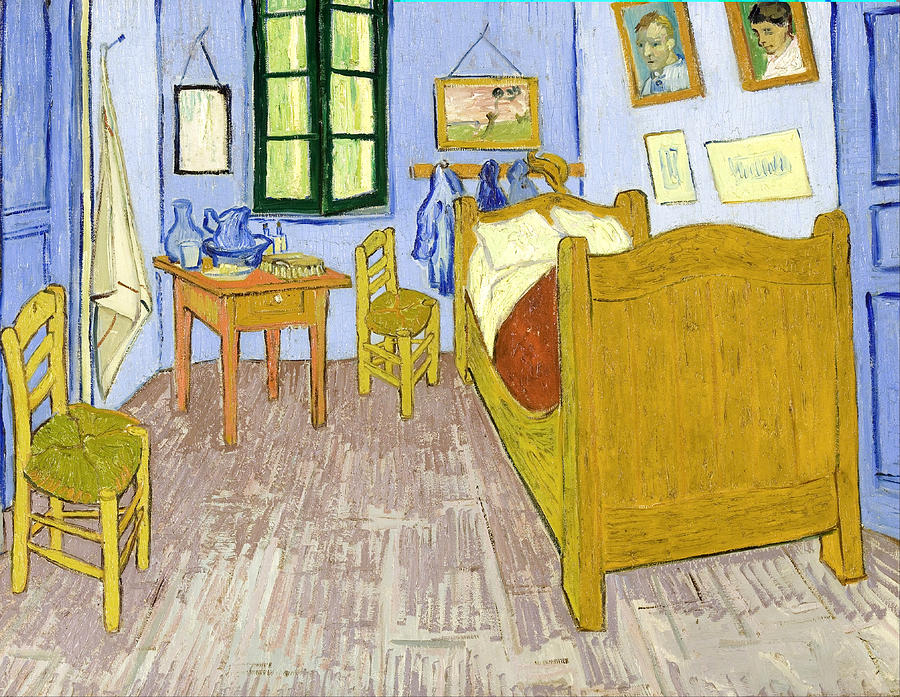
Van Gogh’s “Bedroom in Arles” lets us peek into how one-point perspective can bring a room to life. He didn’t use traditional lines, but he managed to create a sense of depth by making the furniture and floor converge towards the center. Look at the bed and the chairs – they guide our eyes right to the center of the painting. It’s like we’re standing right in his bedroom, taking in every detail.
In Summary: Grasping One-Point Perspective
We’ve covered a lot in this blog post about one-point perspective. It’s a technique that artists use to add depth to their drawings. Remember how parallel lines meet at a single point on the horizon? That’s how we make things look 3D on a flat surface.
But here’s the best part: you can use this technique too. Whether it’s sketching a cityscape, a room, or even a simple scene, one-point perspective can add a whole new level of realism.
So, don’t hesitate to pick up your pencil or your digital tools. Start experimenting with one-point perspective. And if you have thoughts, questions, or experiences to share, go ahead and leave a comment below. Let’s keep the artistic conversation going and inspire each other to create!
